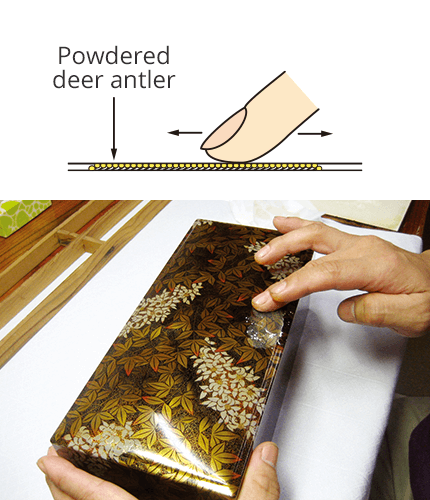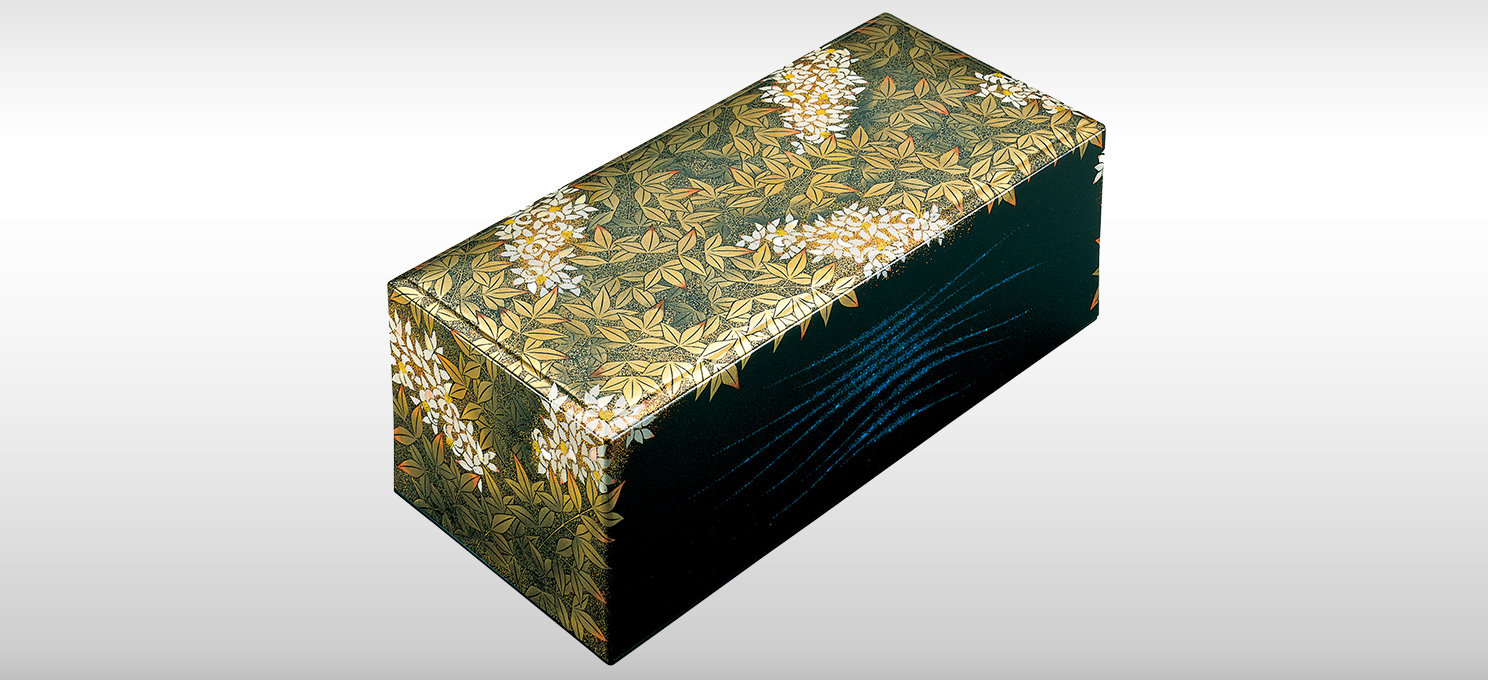
Description
Maki-e (literally “sprinkled pictures”) is a representative lacquerware technique that originated in Japan around 1,200 years ago. Maki-e is done by painting lacquer motifs on the surface of a piece using a fine brush and then sprinkling gold powder onto the lacquer before it hardens, producing luxurious decorations.
There are various styles of maki-e, including togidashi maki-e (burnished maki-e), hiramaki-e (flat maki-e), and takamaki-e (raised maki-e). Works of maki-e have been desirable export items since over 400 years ago, when many pieces crossed to Europe and elsewhere.
Maki-e is a lavish technique for producing brilliant gold and silver motifs on a lacquer ground, and is frequently used in conjunction with other decorative techniques such as mother-of-pearl inlay (Raden), metal inlay (hyōmon), and eggshell inlay (rankaku).
Process
- STEP 1
Motifs are painted in lacquer.
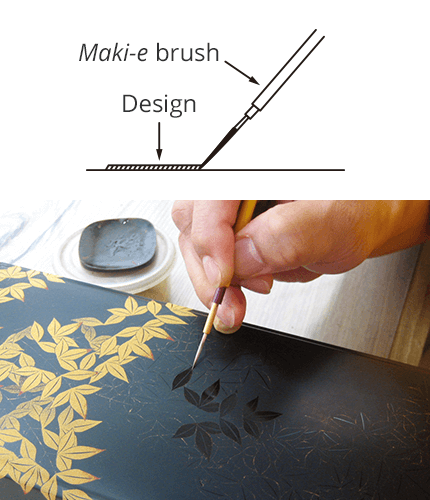
- STEP 2
Gold or silver powder is sprinkled on top of the lacquer.
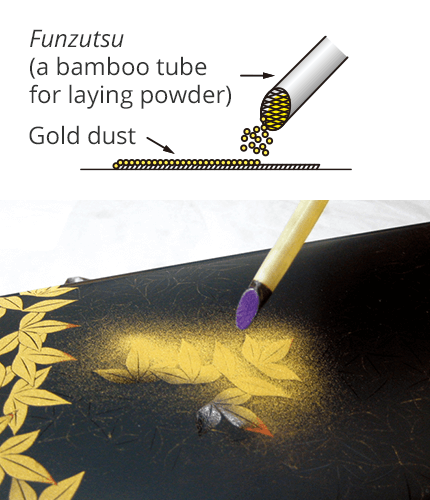
- STEP 3
A top coat of lacquer is applied and then polished down to reveal the design.
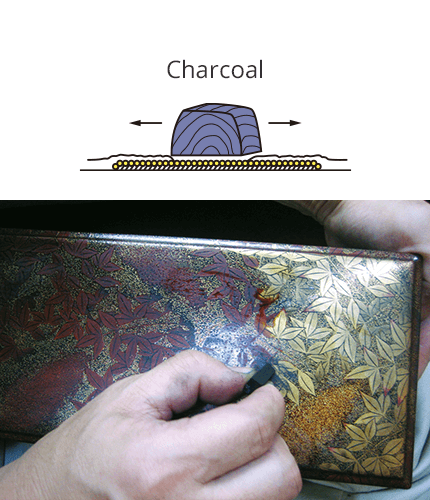
- STEP 4
The piece is burnished with powdered deer antler and completed.
